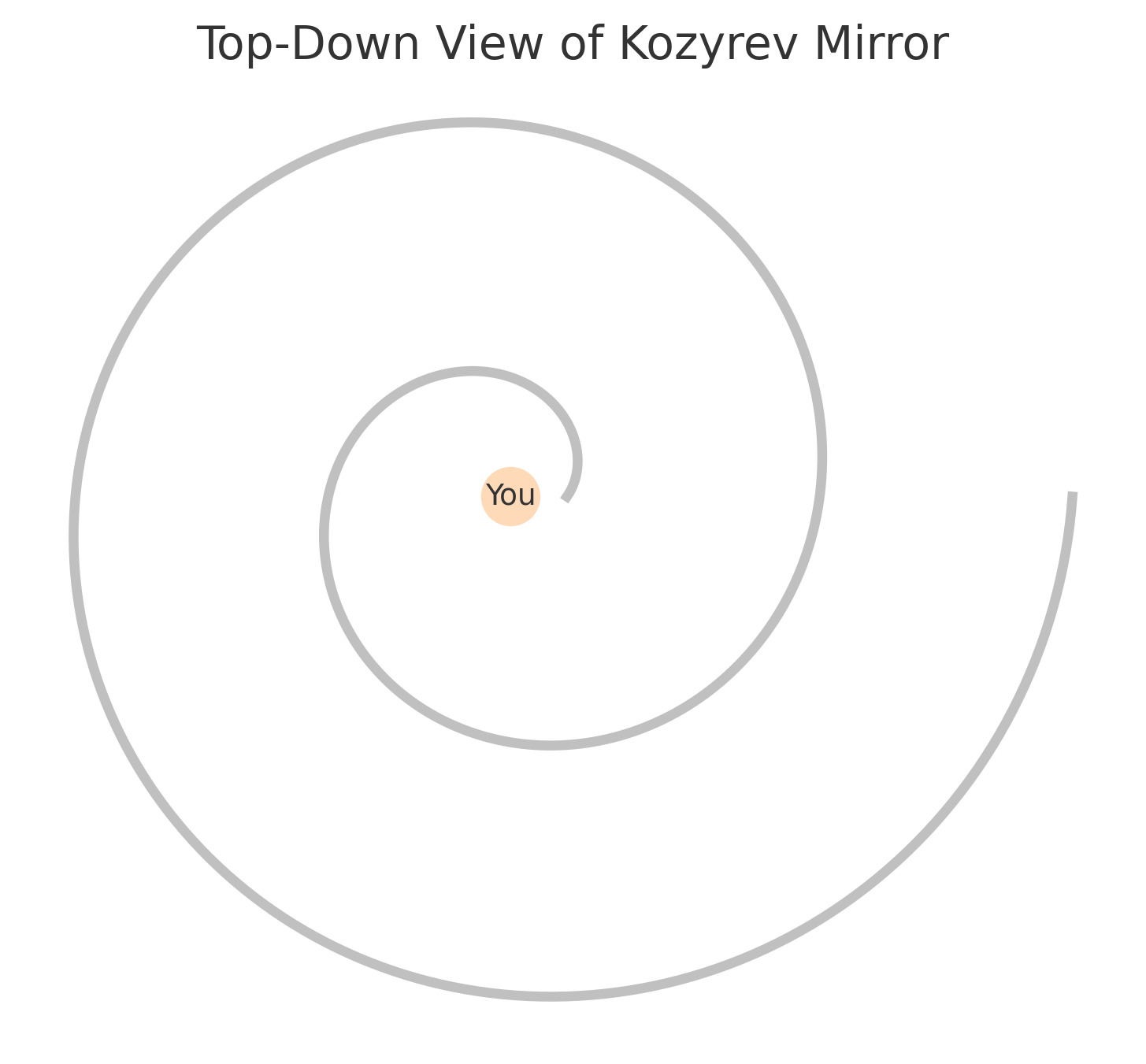Kozyrev Mirrors #
Temporal anomalies and mind amplification in a metal tube
Overview #
✨ This is another weird one. Very fringe tech, but quite possible to build at home. Like black mirrors, they have a bit of a spooky edge, and people report finding the experience unsettling.
Kozyrev Mirrors are a mysterious apparatus made from spiraling sheets of polished aluminum or other reflective metals. Originally developed in Russian military and academic circles during the 1980s and ’90s, the devices are based on the work of astrophysicist Nikolai Kozyrev, who proposed time as a form of physical energy. Users sit inside these mirrored chambers—often blindfolded or in darkness—and report vivid altered states, psychic impressions, out-of-body experiences, and anomalous perception of time.
Theory #
Kozyrev believed that time is not just a coordinate, but an active, flowing force connected to consciousness and entropy. He conducted experiments with spinning gyroscopes, torsion fields, and other fringe phenomena to explore this idea. Later researchers (especially in Siberia) extended his work into psychic and energetic domains—eventually building mirrored cylinders to reflect and concentrate this subtle energy.
The mirrors are said to:
- Isolate and intensify mental energy
- Induce visionary or time-distorted experiences
- Amplify psi abilities, telepathy, or remote viewing
Some claim the spiral shape and polished interior help focus nonlocal information or resonate with torsion fields, though these ideas remain speculative and unproven by mainstream science.
How to Use a Kozyrev Mirror #
- Build a curved mirror – To construct your own:
- Use thin, polished aluminum sheet—typically 0.5–1 mm thick. You can also use flexible mirrored Mylar, but metal is preferred.
- Cut a sheet approximately 2 meters wide by 1.5–2 meters tall.
- Wrap it into a spiral or cylindrical shape, leaving a vertical seam open for entry. A gentle inward curve at the top can enhance the sense of enclosure.
- Secure the spiral shape using metal brackets, rivets, or zip ties at regular intervals. Avoid sharp edges.
- The inside should be as reflective and smooth as possible. Polish the metal or apply mirror film if necessary.
- Optional: Add a floor panel or soft mat, and a stool or low chair inside.
- Place it in a quiet, low-light room for best results.
- Enter and get comfortable – Sit on a stool or cushion. You can wear a blindfold or keep your eyes closed.
- Set a clear intention – This isn’t passive—focus on a question, image, or target.
- Remain still and observe – Sessions typically last 15–40 minutes. Watch for inner visuals, energetic sensations, or shifts in perception.

Top-down view of a Kozyrev Mirror spiral enclosure, with the participant seated at the center.
Expected Outcomes #
- Visuals, dreamlike images, or memories surfacing
- Altered sense of time or space
- Heightened intuition, symbolic insight, or “downloads”
Risks & Considerations #
- Often intense—start with short sessions
- Can be disorienting or emotionally charged
- Don’t use in a highly suggestible or unstable state
Variations & Extensions #
- Partial Kozyrev Mirrors – Use a curved sheet of aluminum around the body
- Standing vs. Seated Chambers – Explore physical orientation effects
- Group Use – Some experiments suggest effects intensify in group sessions
Further Exploration #
- Research from the Russian Academy of Sciences and A.E. Akimov’s torsion field theories
- Kozyrev’s original work on time asymmetry and stellar radiation
- Compare with orgone accumulators, Faraday cages, and float tanks
Call for Reports #
Help Build the Field
Have you tested this technique? Share what happened – whether it worked, failed, or took you somewhere weird.
Submit Your Report